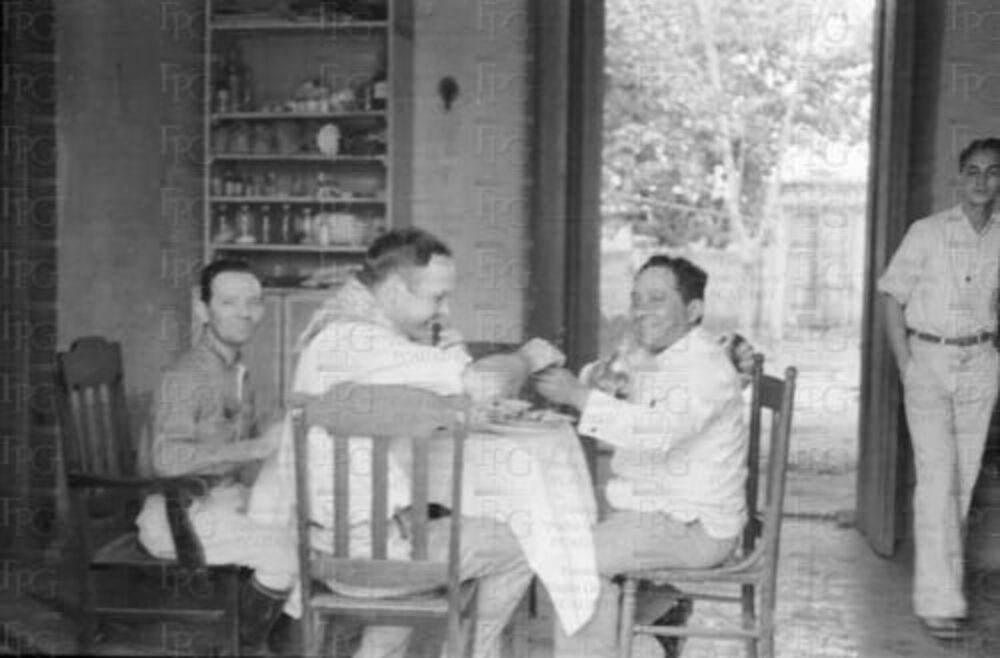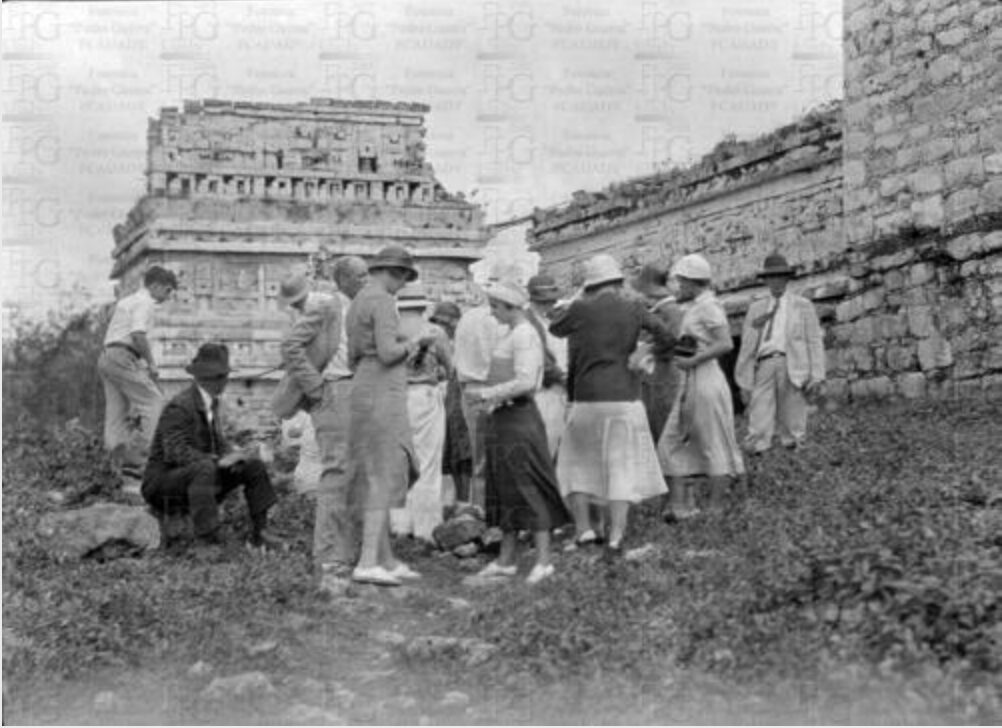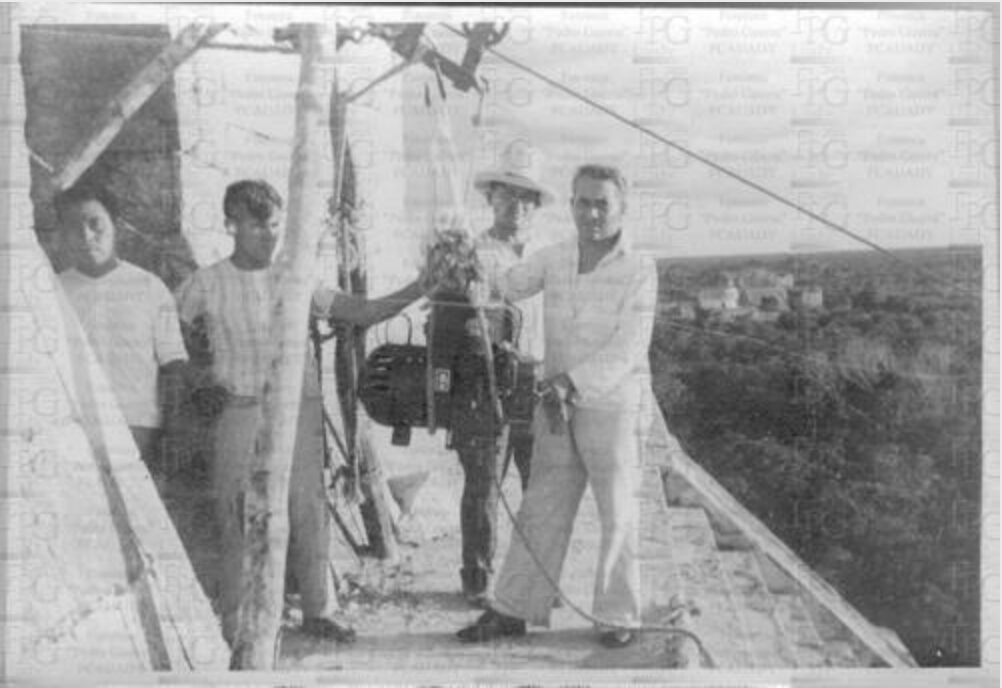Upon searching through a few different sections of photos on the Fototeca Pedro Guerra website, I became familiar with the name Raúl Cámara Zavala. He was a photographer who captured many photos of places, including markets, haciendas, and archeological sites like Chichén Itzá. The extent of the information surrounding him after a few google searches were an article from the Universidad Autonomous de Yucatán, a few mentions citing his photographs in articles, and a few family trees that matched with what could be his life’s timeline. The paper by the Universidad Autonomous de Yucatán was called “De cómo se hizo cine en Yucatán” (How Cinema Was Made in Yucatán). The link is long, but I will attach it here: chrome-extension://efaidnbmnnnibpcajpcglclefindmkaj/https://www.revistauniversitaria.uady.mx/pdf/236/ru23611.pdf
This article is written in Spanish, and I am not sure that I understood its contents completely after attempts at comprehension and online translation, but generally it spoke about the roots of film in the Yucatán region and the people who made that possible. Towards the end, Raúl Cámara Zavala’s name was mentioned where he was referenced as a photographer who became a technician in the United States, then involved in silent film, and press photography. From photos of him, of which there are many on the Fototeca website, he seems relatively short and cheerful.

Photographer Raúl Cámara Zavala (far left) in the company of staff from the Carnegie Institution of Washington (after Andrew Carnegie, now Carnegie Science) in Chichén Itzá. (Raúl Cámara Zavala).
The photos catching my attention most- which all happened to be taken by Raúl Cámara Zavala- were of people at Chichén Itzá. These photos are of people who seem to be tourists, though it is unclear where they are from. My first assumption was that some of the people were from America, perhaps because I know many American tourists visit Chichén Itzá today. It was surprising to me that people would visit this place outside of archeological research almost 100 years ago (1925-1940). It brings into stark contrast how out of place people seem in a place with such history, in that they just look “off” in that environment.
Speaking a bit more on Chichén Itzá, I’ve found it interesting to compare our visit there to our visits to Izamal and Uxmal. The pyramids at Izamal felt so casual: Kinich Kamao was through a building, and barely visible from the road. After eating lunch, I walked to another pyramid and on the way were half uncovered pyramids that were completely unlabeled, surrounded by trees and buildings. This was so fascinating to me. Uxmal was perhaps the most impressive to me, because of how expansive the architecture was. The fact that the Palacio de Gobernador was built on top of a platform that was built on top of buildings is incredible. I was very surprised that there were few visitors at Uxmal. It is so interesting that Chichén Itzá is the most popular, perhaps because it was the largest city, but I wonder what factors exactly contribute to its vast popularity.

Group of people between women and men around two Mayan temples, belonging to the group of La Iglesia, in the background on the left, and part of La nuns house. You can see the Chaac masks and the different high and low relief finishes in both temples. (Raúl Cámara Zavala, 1925-1940)
I wonder what Raúl Cámara Zavala was doing accompanying a trip to this site, and why he was chosen to take pictures. Not only was Zavala documenting the places he was seeing, but the people within those places. I find the first photo above interesting because it shows Zavala with people who seem to be American anthropologists (based on the photo description). I also want to note Pedro Guerra’s impact and presence throughout this Fototeca. He took photographs everywhere and of everything, if most significantly in the photo studios.
I think it’s almost in the job description for the photographer to be written out of the narrative, because it isn’t the person behind the lens who is important but the photo itself. At least, I think that is the idea that permeates, and that likely is the perspective of the photographer. Photos exist, yes, but unlike films or books, we do not recognize the author of this art as much as we perhaps should. I was disappointed I couldn’t find more information about Raúl Cámara Zavala, but it might have been more important for him to have his work passed on rather than his story. Because he is the one who took these photos, though, his work and his story are intertwined, and we can find out something about him from the places he photographed. I was happy to find that when I searched his name on the Fototeca website, several photos of him showed up as well. He is still alive in photographs, if not in words. I am unsure what method of remembrance seems more ideal.

Portrait of four standing on the upper platform of the Temple of Kukulcán or Castle of Chichén Itzá, while carrying out tasks of raising or lowering lighting equipment. In the background it is possible to see the Caracol or Observatory and the House of the Nuns. (Raúl Cámara Zavala, Unknown date)